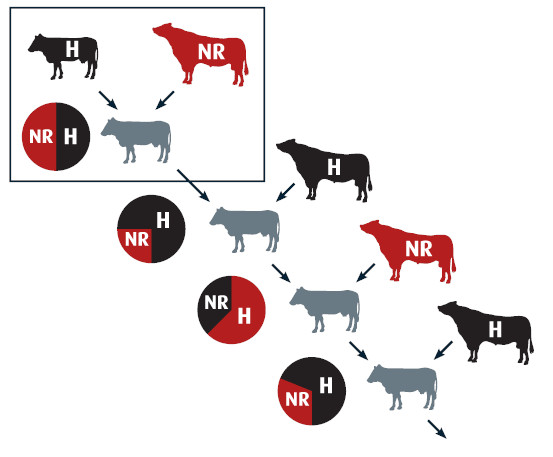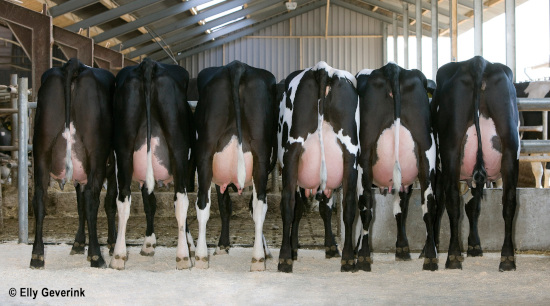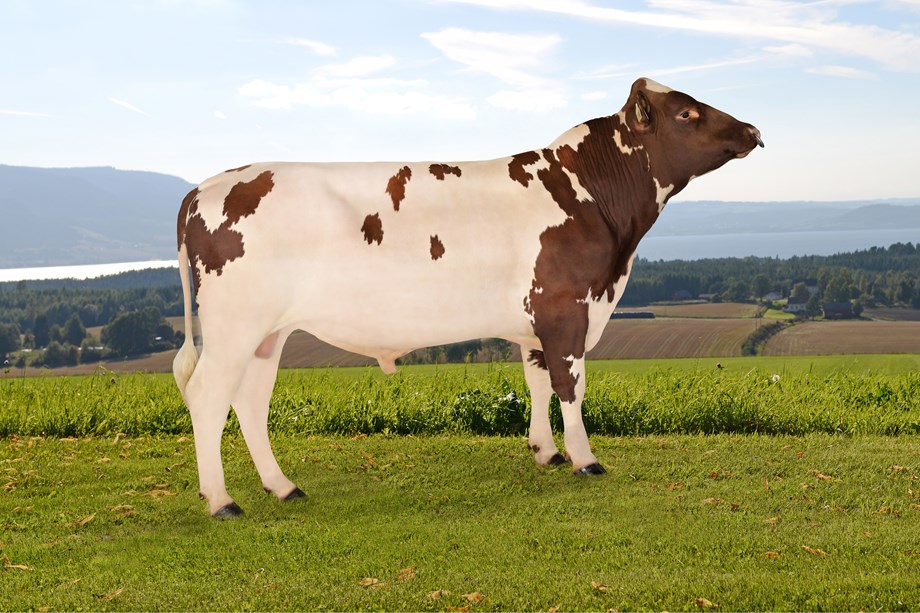By Gary Rogers
Purebred sires will be more highly selected compared to crossbred bulls. The rotation of purebred sires from the suitable breeds will result in higher heterosis over time compared to using crossbred sires. In addition, the use of purebred sires in a rotation will result in more uniformity and less variability compared to the use of crossbred sires where the same breeds are involved. Crossbred sires can provide genes from two breeds quickly, which might be desirable in unique circumstances.
Increasing use of crossbreeding
The use of crossbreeding in commercial dairy herds has grown in recent decades, and this trend is expected to continue. Most of the crossbreeding in dairy herds has involved the use of purebred bulls, but the use of crossbred bulls has generated some interest in recent years. The question to ask is "What are the advantages or disadvantages of using purebred dairy sires in a rotation compared to using crossbred bulls?".
Examples of rotational crossbreeding and the use of crossbred bulls
Rotational crossbreeding in dairy cattle is the practice of using purebred males from different breeds in a specified order. A two-breed rotation is the simplest form of a rotational crossbreeding scheme, and can be illustrated by the following example.
- Start with Holstein (HO) female and mate the HO female to Norwegian Red (NR) sire to get NR X HO crossbred. This is a first-generation crossbred and usually labeled as an F1.
- Then mate the NR X HO first generation crossbred to a purebred sire from one of the breeds (either HO or NR) to get a second generation crossbred of either HO X (NR X HO) or NR X (NR X HO).
These crosses are called back-crosses because there are only two breeds involved. They are also called F2 crosses. Once the second-generation crossbred female is breeding age, she will be mated to the least related breed. For example, if you have a second-generation crossbred female with the breed combination HO X (NR X HO), then she should be mated to an NR sire. But if you have an NR X (NR X HO) female she should be mated to a HO sire. This would be the F3 generation.
This same pattern continues with the use of purebred bulls in a rotational scheme and by mating females using a purebred sire of the least related breed. This rotational crossbreeding approach can be readily adapted to three (or more) breeds as well. In practice, the use of two or three breeds in a rotation is most common.

The utilization of crossbred bulls is likely best illustrated by looking at the practice in New Zealand. Here crossbred sires are readily available and can be mated to crossbred cows. Jersey (JE) X HO crossbred cows (with varying genetic contributions from each breed) are common in New Zealand, as crossbreds make up approximately 50% of the New Zealand dairy herd. These JE X HO crosses have been developed over several decades of crossbreeding, and in recent decades JE X HO crossbred bulls have also been available to use.
Much like the JE X HO females, the JE X HO crossbred bulls vary in the level of breed contribution, but many are close to 50% JE and 50% HO. These JE X HO crossbred bulls are sometimes mated to JE X HO crossbred females, resulting in the use of two-breed crossbred females being mated to two-breed crossbred males of the same breeds. Purebred JE, HO, and recently NR sires, are more frequently used on crossbred females. However, a significant percentage of crossbred females are mated to crossbred males in New Zealand.
Purebred bulls have much higher selection intensity
Modern genetic improvement programs rely heavily on very intense selection in both the females and males. This is to achieve very fast rates of genetic progress, and to provide commercial herds with top bulls for use in improving their herds. Large numbers of crossbred bulls could be produced using the best purebred females and purebred males. However at this point in most dairy populations, the selection intensity for crossbred bulls is far lower than what is practiced in purebred populations.
For example, in the Norwegian Red population over 8000 of the top pedigreed purebred Norwegian Red young bulls are genomic tested each year. Only 45 to 50 are ultimately chosen for artificial insemination (AI) and used in the Norwegian Red population (equates to less than one percent of top bulls used). The selection of top Norwegian Red heifers to be embryo donors occurs in the same way.
Although it is hard to get exact selection intensity numbers for the global Holstein population, the global Holstein population would also have very intense selection likely similar to the selection intensity in Norwegian Red.
The number of top pedigreed crossbred bull calves produced and genomic tested each year would be very small compared to the production and testing of purebred bull calves. The limitations due to a smaller number of crossbred bulls tested each year do not allow for the intense selection of crossbred bull calves like we have in purebreds. Crossbred bulls currently do not have the same level of genetic performance found in modern purebred sires from key dairy breeds.
Purebred bulls result in a higher level of sustained heterosis
Heterosis or hybrid vigor is maximized when animals of unrelated breeds are crossed. First generation crosses (F1) or equivalent crosses such as the second generation cross in a three-breed rotation where the sire is from an unrelated breed to the female, provides maximum heterosis. Using purebred sires in a rotational crossbreeding system provides more heterosis on average over the generations than using crossbred sires than involve the same breeds.
To illustrate this more, consider a two-breed rotation versus the use of crossbred bulls involving the same two breeds. In this situation, the level of heterosis averaged over future generations of crosses is higher with the alternating use of purebred sires, when compared to the repeated use of crossbred bulls. The heterosis advantage from the alternating use of purebred sires in rotation compared to using crossbred bulls is not large, but it could be important for traits like fertility and health that are substantially impacted by heterosis.
Purebred bulls produce less variability in offspring
Variability in performance, even for traits like cow size and body weight, can be important for efficient dairy production. This is why many dairy producers want uniformity in their heifers and cows. Uniformity especially allows for large herds to manage cows in large groups, but it can also be important for smaller herds where cows need to fit into herd facilities and produce milk that is most valued for the local milk market.

It might seem counter-intuitive and surprising to many herd owners and managers, but the rotational crossing using purebred sires results in more uniformity compared to the use of crossbred bulls from the same breeds. Keep in mind that all animals receive half their genes from the sire, and half of their genes from the dam. In a two-breed rotation created by rotating purebred sires, all animals would be expected to have 50% of their genes from the purebred sire and the other 50% from the dam. The genes from the dam will be a combination of the two breeds involved, and the percentage of each breed in the dam is dependent on generation.
More variability when using crossbred bulls
In a two-breed system where crossbred bulls are used on crossbred females, it is theoretically possible that offspring from a two-breed crossbred female and a two-breed crossbred sire, can essentially have all their genes from just one of the parental breeds. This is because each parent contributes half the genes to the next generation, and the resulting offspring could (unlikely of course) get all their genes from only one of the original parental breeds.
When using crossbred bulls on crossbred females, the resulting offspring can vary from something very close to the purebred of one breed, to something very close to the purebred of the other breed. It is interesting that scientists use the mating of crossbred females with crossbred males to generate variability for genetic experimentation, where they need lots of genetic variabilities as well as the mixture of genes from various breeds or lines. In general, commercial dairy producers would not favor this additional variability.
The possible advantage of using crossbred bulls
The use of crossbred bulls could be a mechanism to rapidly inject genetics from two or more different dairy breeds into a program where current females are from an unrelated breed. This system could be used, for example, when introducing modern dairy genetics into local populations to produce cows for commercial dairy production without having to wait for two generations to get genes from more than one dairy breed.
